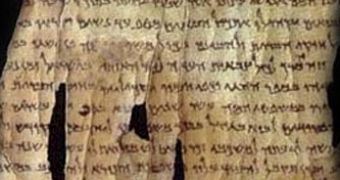The Israel Antiquities Authority has decided to publicly display the Dead Sea Scrolls come next year. And it’s not going to be in a museum, as it would seem most likely, but on the Internet instead. The texts found in the 1940s in a cave near the Dead See comprise the entire Old Testament, with only one book – the Book of Ester – missing.
Ever since the manuscripts were discovered, they have been photographed only once. This is explainable by that they are extremely fragile, and ultraviolet light or heat could seriously deteriorate them. The pictures that have been taken in the 1950s will undergo a process of digitalization. Although the new technologies allow photographing without nearly any heat or damaging light emission, the old copies will be used too because they caught several amazing details and fragments which, as of then, have become deteriorated.
The digitalized and edited copies of these photos, along with others that the Israeli authority says it will take, are to be posted on the Internet. Naturally, many are already anxious to see the 900 pages that have been carefully brought together from thousands of fragments, but this is not likely to happen in the near future. The team that works on the restoration of the manuscripts says that their job will be finished next year, the soonest.
One of the people currently working on the reconstruction and preservation of the ancient scrolls, Pnina Shor, stated for the New York Times, “The project began as a conservation necessity. We wanted to monitor the deterioration of the scrolls and realized we needed to take precise photographs to watch the process. That’s when we decided to do a comprehensive set of photos, both in color and infrared, to monitor selectively what is happening. We realized then that we could make the entire set of pictures available online to everyone, meaning that anyone will be able to see the scrolls in the kind of detail that no one has until now.”

 14 DAY TRIAL //
14 DAY TRIAL //